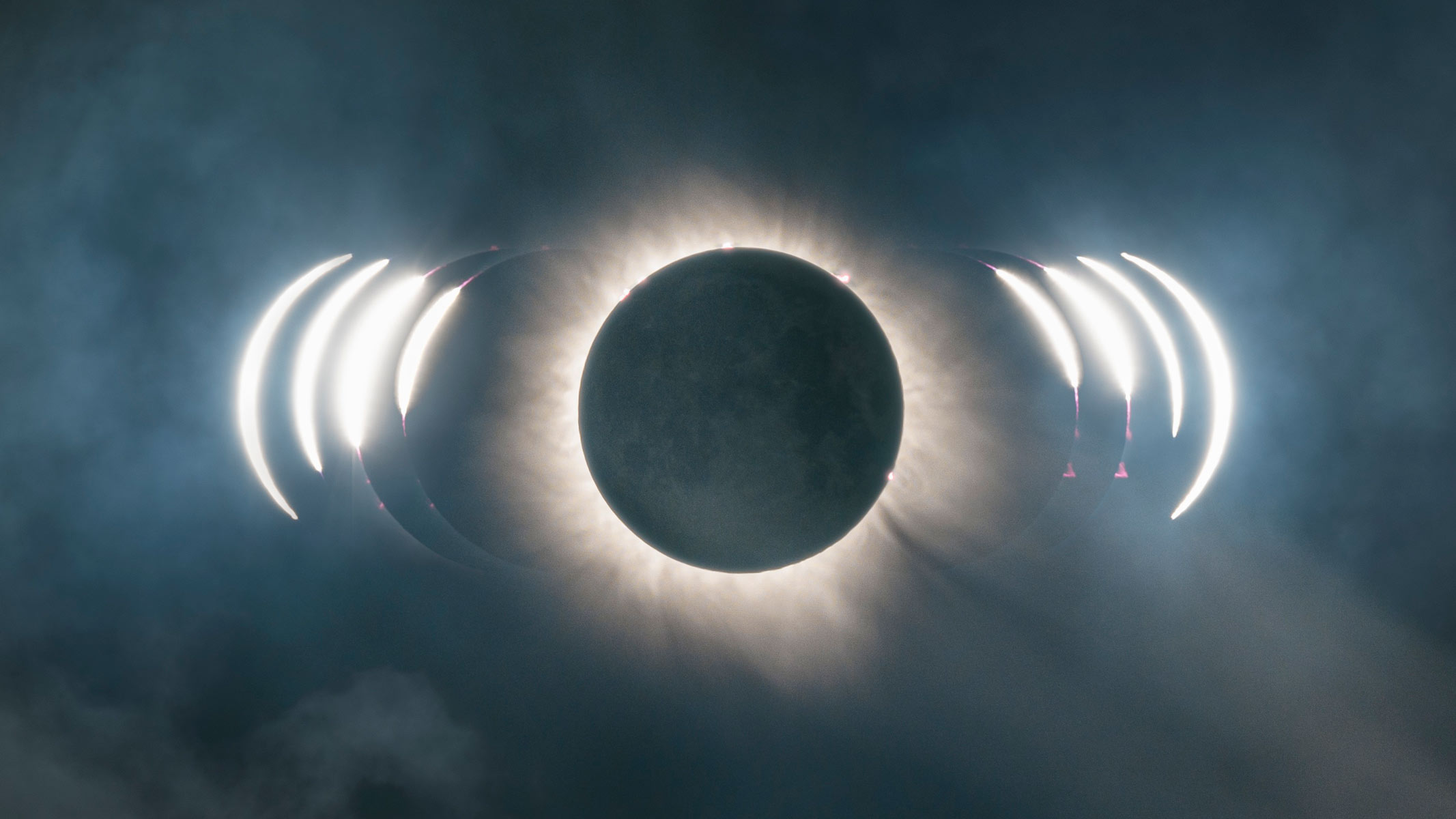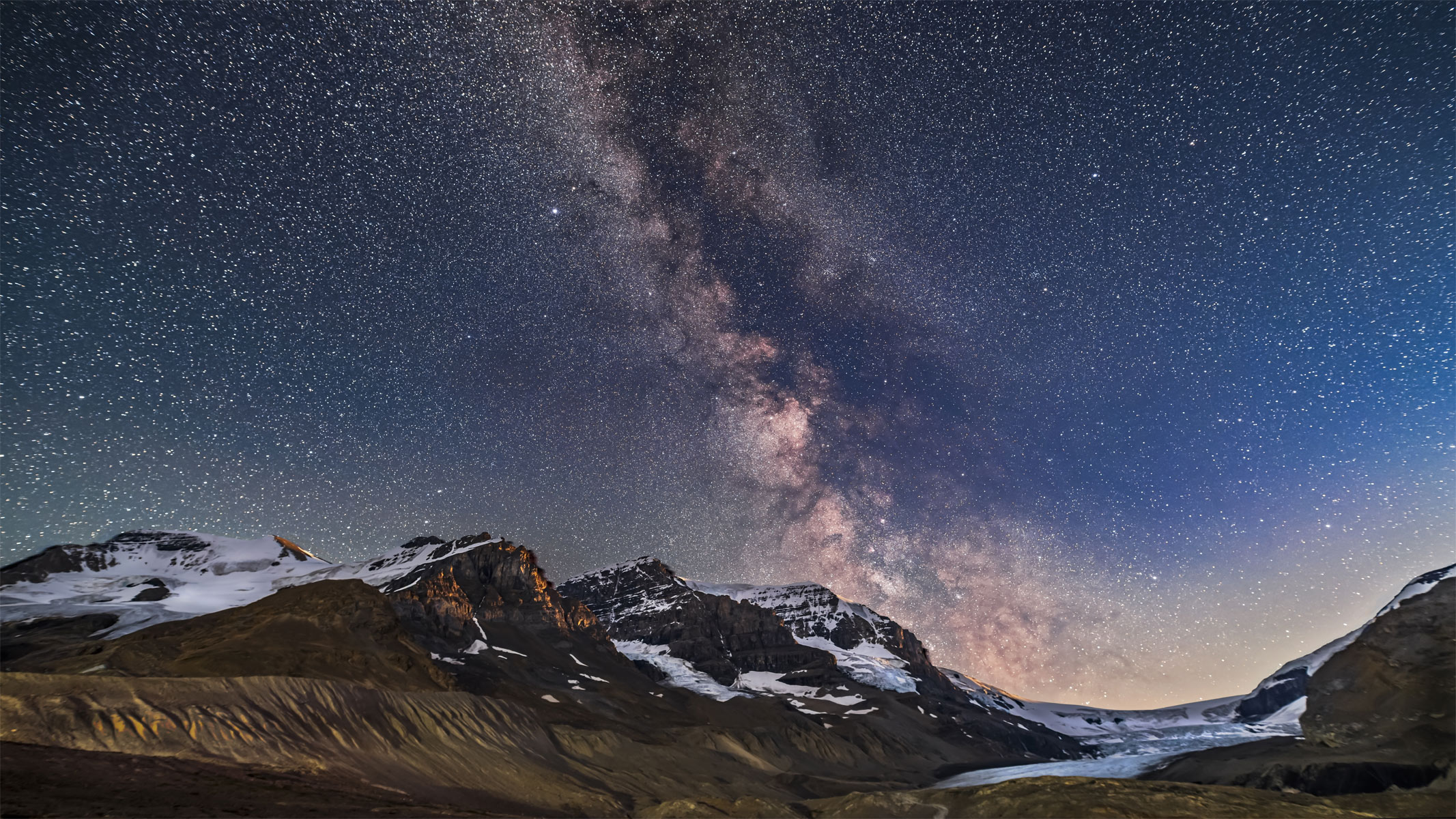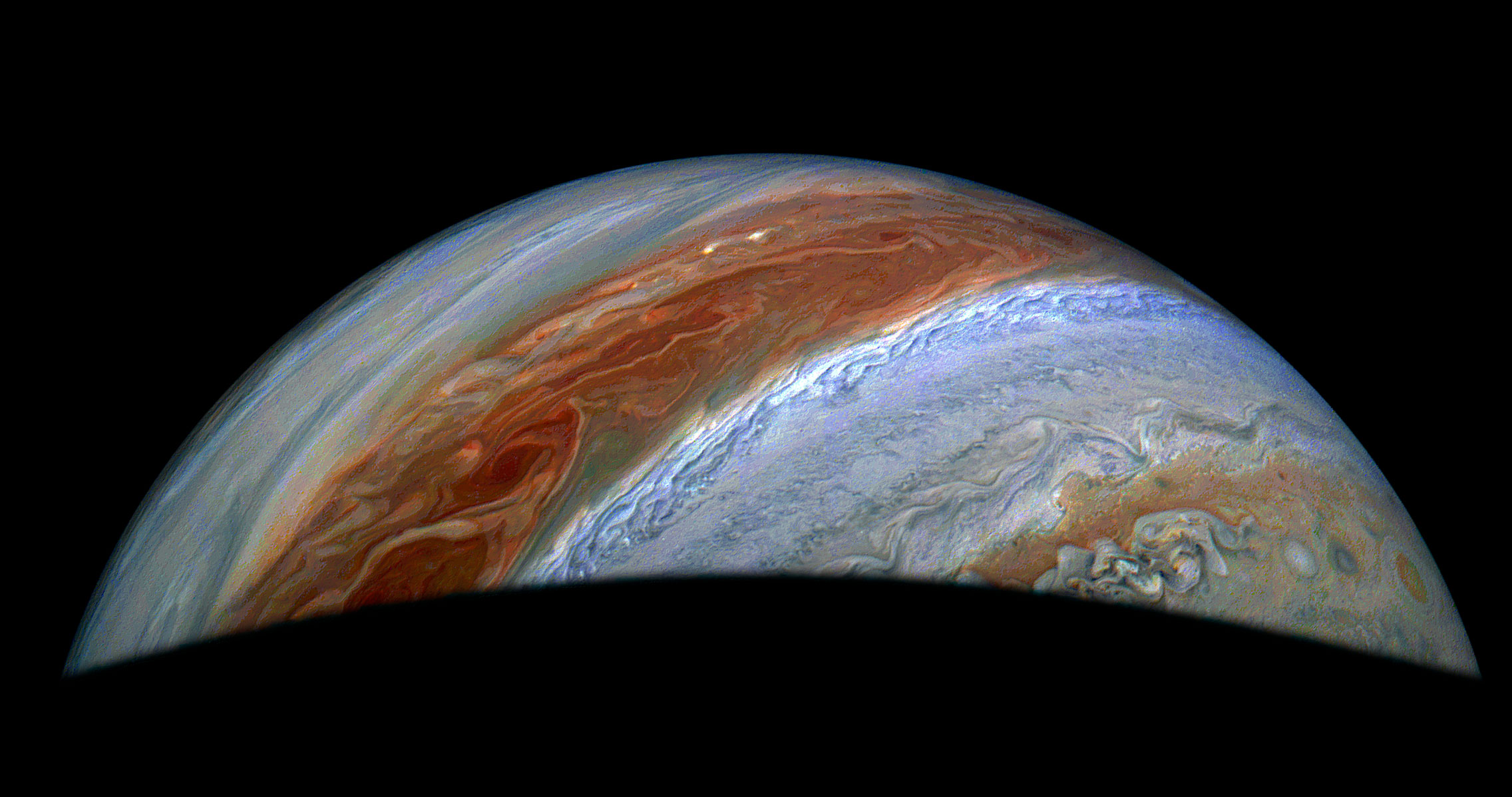Solar wind: What is it and how does it affect Earth?
Any way the solar wind blows, its effects can be felt throughout the solar system.

The solar wind is a continual stream of protons and electrons from the sun's outermost atmosphere — the corona.
These charged particles breeze through the solar system at speeds ranging from around 250 miles (400 kilometers) per second to 500 miles (800 km) per second, in a plasma state, according to the National Oceanic and Administration Space Weather Prediction Center (SWPC).
When the solar wind reaches Earth it sends a flurry of charged particles into the magnetosphere and along Earth's magnetic field lines, towards the poles. The interaction of these particles with Earth's atmosphere can produce glowing aurora displays above polar regions.
Related: How hot is the sun?
The existence of the solar wind was first proposed by pioneering astrophysicist Eugene Parker whose name graces NASA's Parker Solar Probe mission.
In 1957, Parker was working as an assistant professor at the University of Chicago when he realized the superheated corona of the sun should, in theory, emit charged particles at high speed, according to the University of Chicago. (This superheating is one of the most mysterious aspects of the sun's behavior and solar physicists still don't completely understand why the sun's atmosphere is hotter than its surface.)
Parker's theory described that in the sun's corona, plasma is continually heated with temperatures in this region reaching a blistering 3.5 million degrees Fahrenheit (2 million degrees Celsius). Eventually, the plasma becomes so hot that the sun's gravity can no longer hold it down so it is hurled into space as the solar wind, dragging the sun's magnetic field along with it, according to NASA JPL.
The solar wind transports a million tons of matter into space every second, according to NASA.
His theory was widely criticized at the time, Parker recalled in 2018. "The first reviewer on the paper said, 'Well I would suggest that Parker go to the library and read up on the subject before he tries to write a paper about it, because this is utter nonsense.'"
Support for this theory finally came from astrophysicist Subrahmanyan Chandrasekhar — who, decades later became the namesake of NASA's Chandra X-ray Observatory. Though Chandrasekhar wasn't fond of the particle idea, he accepted Parker's theory because he could not find any issues with Parker's mathematics, the University of Chicago said.
Then in 1962, NASA's Mariner 2 spacecraft detected the presence of solar wind particles during its voyage to Venus.
In addition to the constant streams of solar wind, the sun sometimes expulses massive quantities of those charged particles in one go. These events, known as coronal mass ejections (CMEs), can trigger geomagnetic storms in the environment around Earth, which are associated with the beautiful aurora displays, but can also wreak havoc with power grids, telecommunication networks and satellites orbiting the planet.
How far does the solar wind blow?
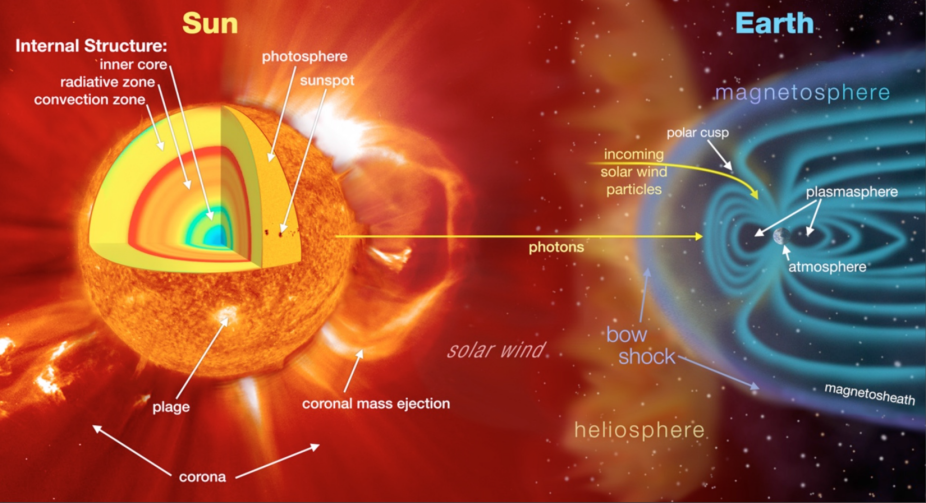
The solar wind sweeps through the solar system far beyond the orbit of Pluto, forming a large "bubble" called the heliosphere. According to NASA, the heliosphere is shaped like a long wind sock as it moves with the sun.
The closest boundary of the heliosphere is about 100 AU out from the sun, according to an ESA statement. (1 AU, or astronomical unit, is the average distance from Earth to the sun, it is equivalent to roughly 93 million miles (150 million kilometers).
The heliosphere acts as a protective shield, defending us against cosmic rays consisting of energetic particles that can damage living cells. Comic rays are generated outside our solar system and blaze along at almost the speed of light. Without our protective bubble, these high-energy atom fragments would constantly bombard Earth. "Without the heliosphere, life would certainly have evolved differently - and maybe not at all," says heliophysicst Richard Marsden in the ESA statement.
Solar wind speed

Though the solar wind flows from the sun constantly, its properties such as density and speed vary throughout the sun's 11-year cycle of activity. During this cycle sunspot numbers, radiation levels, and ejected material ebb and flow from a solar maximum to a solar minimum. These alterations affect the properties of the solar wind, including the strength of its magnetic field, the speed at which it travels, temperature and density.
The average constant solar wind speed at Earth is around 190 miles (300 km) per second (mps) according to the space weather forecast website SpaceWeatherLive.com.
The solar wind travels at average speeds of 0.87 million mph (1.4 million km/h). A Category 5 hurricane can top 150 mph (241 km/h).
During Mariner 2's flyby of Venus, the spacecraft not only detected the presence of solar wind but also identified two distinct streams of solar wind, one fast and the other slow. According to NASA, the slow stream was reported to be traveling about 215 mps whilst the fast stream zipped by at twice that speed.
The origin of the fast stream of solar wind was identified in 1973 using X-ray images taken of the sun's corona from Skylab. The culprit for speedy solar winds are coronal holes, cooler regions of the sun with an open magnetic field line structure that allows the solar wind to escape with relative ease.
Abnormally fast solar winds can be generated during coronal mass ejection (CME) events. During CMEs, wind speeds can jump up to more than 600 miles (1000 km) per second, according to SpaceWeatherLive.com.

Despite the impressive breakneck speeds achieved by some solar wind streams, it is the slower solar wind that has got scientists scratching their heads.
"The slow solar wind is, in many respects, a larger mystery," said Jim Klimchuk, solar physicist at NASA's Goddard Space Flight Center in Greenbelt, Maryland, in a NASA statement.
NASA's Ulysses mission, launched in 1990, has already revealed some clues to the origin of the slow wind stream when it flew around the sun's poles. It found that during periods of minimum solar activity, the solar wind originates primarily from the sun's equator.
"As the solar cycle progresses toward its maximum, the structure of the solar wind changes from two-distinct regimes — fast at the poles and slow at the equator — to a mixed, inhomogeneous flow." according to a NASA statement on the Parker Solar Probe and the birth of solar wind.
The Parker Solar Probe will investigate this mystery during its seven-year mission to observe the sun. "It offers great promise for revealing fundamental new understanding," said Klimchuk.
The effects of solar wind
The effects of our windy star are felt throughout the solar system.
"My feeling is — if the sun sneezes, Earth catches a cold, because we always feel the impact of what happens on the sun thanks to the solar wind," said Nicky Fox, the division director for heliophysics at NASA Headquarters in a NASA Science article.
On Earth, the solar wind is responsible for dazzling aurora light shows around the polar regions. In the Northern Hemisphere the phenomenon is called the northern lights (aurora borealis), while in the Southern Hemisphere, it's called the southern lights (aurora australis). If solar wind speeds are high enough geomagnetic storms can be triggered which can lead to auroras expanding closer to the equator than is possible during calmer space weather conditions.
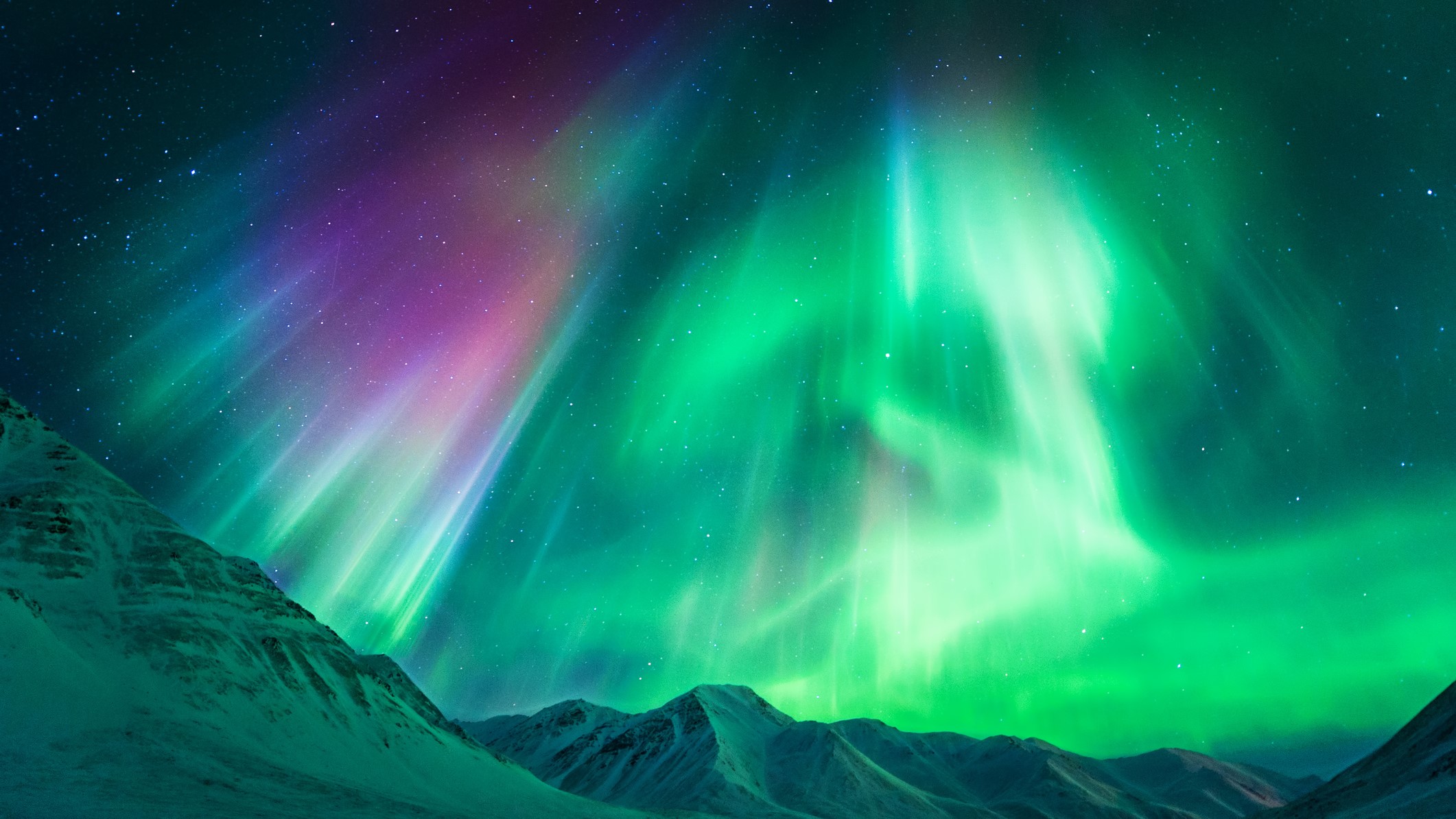
Geomagnetic storms can also wreak havoc with satellites and electricity networks and threaten astronauts in space. During these storms, astronauts on the International Space Station need to seek shelter and all spacewalks are paused and sensitive satellites are powered down until the radiation storm has passed.
SpaceX has already witnessed firsthand the damage space weather can do when a geomagnetic storm destroyed up to 40 Starlink satellites worth over $50 million, in Feb. 2022. As Starlink satellites are released into very low-altitude orbits (between 60 and 120 miles (100 to 200 km), they rely on onboard engines to overcome the force of drag, raising themselves to a final altitude of about 350 miles (550 km).
During a geomagnetic storm, Earth's atmosphere absorbs energy from the storms, heats up and expands upwards, leading to a significantly denser thermosphere that extends from about 50 miles (80 km) to approximately 600 miles (1,000 km) above the Earth's surface. A denser thermosphere means more drag which can be an issue for satellites. In Feb. 2022 the batch of recently released Starlink satellites failed to overcome the significantly increased drag from the geomagnetic storm and began to fall back to Earth, eventually burning up in the atmosphere.
Solar weather can have drastically expensive consequences, it is, therefore, important to increase our understanding, monitoring and predictions of such events. Scientists study solar wind in a bid to shed light on the space weather environment and improve space weather forecasts.
"We can't ignore space weather, but we can take appropriate measures to protect ourselves," NASA says.
How do scientists study solar wind?
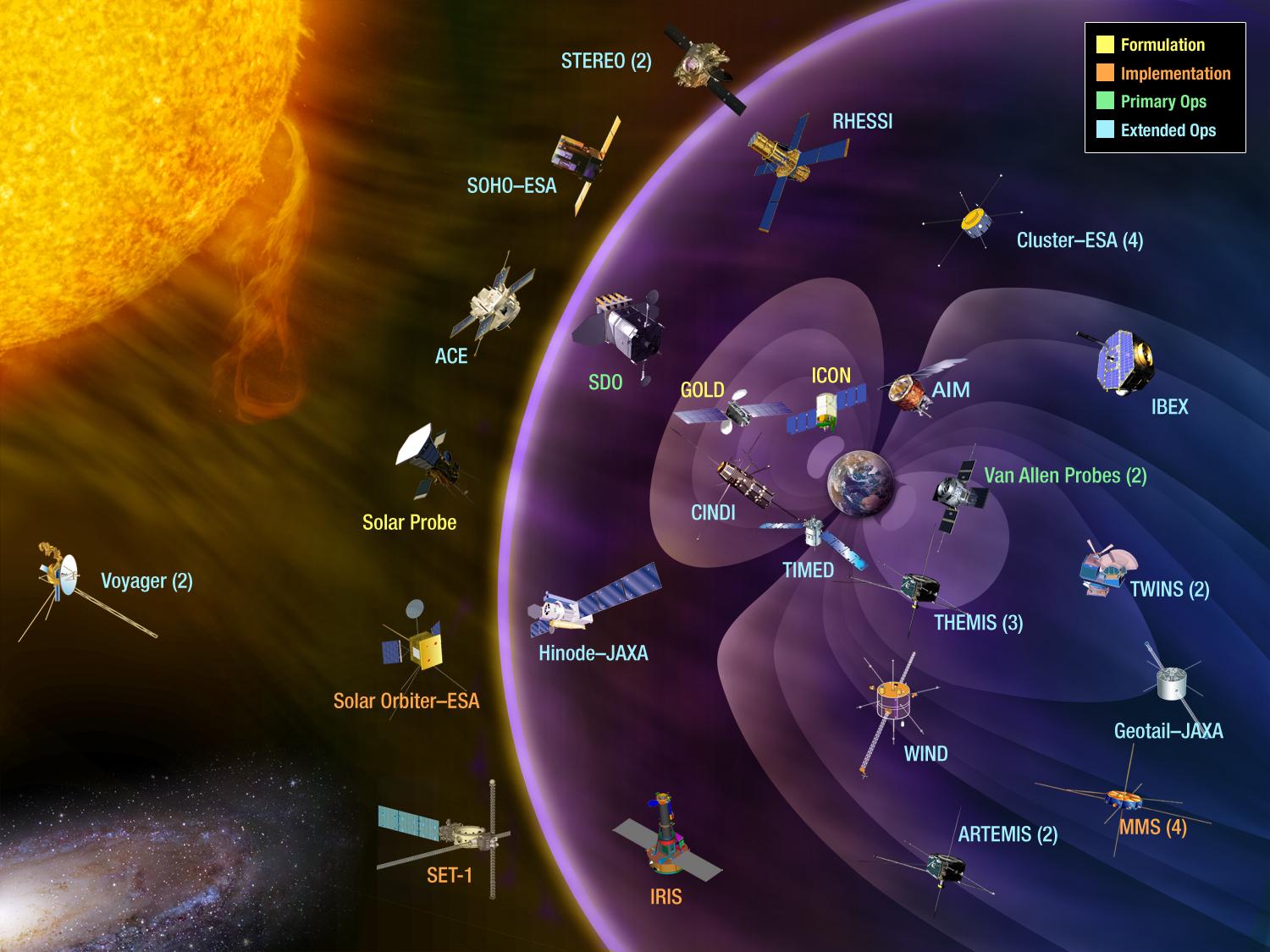
Heliophysics missions study the sun and its influence on the solar system, including the effects of solar wind.
According to NASA the goal of these missions is "to understand everything from how planetary atmospheres have formed, to how space weather can affect astronauts and technology near Earth to the physics that defines our neighborhood in space."
Understanding the solar environment is no mean feat hence why there is a whole fleet of space missions dedicated to understanding our sun and its behavior. These missions can be collectively thought of as a single observatory, The Heliophysics System Observatory (HSO).
The HSO consists of several solar, heliospheric, geospace and planetary spacecraft including the Parker Solar Probe on a daring mission to "touch" the sun, the Solar and Heliospheric Observatory (SOHO) — a joint effort between NASA and the European Space Agency (ESA), the Solar Terrestrial Relations Observatory (STEREO) consisting of two near-identical observatories one located ahead of Earth's orbit and the other trailing behind and ESA's Solar Orbiter that is taking a first time look at the sun's uncharted polar regions.
Additional resources
If you want to see how the solar wind interacts with other objects in the solar system check out this NASA infographic. Explore the numerous NASA heliospheric missions in more detail with NASA. Explore solar wind in more detail with this explainer article from the University of Chicago. See real-time solar wind speed and density with NOAA's Space Weather Prediction Center.
Bibliography
Richardson, J. D., Wang, C., & Paularena, K. I. (2001). The solar wind: from solar minimum to solar maximum. Advances in Space Research, 27(3), 471-479. https://www.sciencedirect.com/science/article/pii/S0273117701000746
Coronal holes. NOAA / NWS Space Weather Prediction Center. Retrieved June 15, 2022, from https://www.swpc.noaa.gov/phenomena/coronal-holes
Fox, K. Impacts of strong solar flares. NASA, May 13, 2013. Retrieved June 15, 2022, from https://www.nasa.gov/mission_pages/sunearth/news/flare-impacts.html
Frazier, S. Fast solar wind causes Aurora Light Shows. NASA, October 9, 2015. Retrieved June 15, 2022, from https://www.nasa.gov/image-feature/goddard/fast-solar-wind-causes-aurora-light-shows
The heliosphere. ESA Science & Technology, September 1, 2019. Retrieved June 15, 2022, from https://sci.esa.int/web/ulysses/-/2576-the-heliosphere
Lerner, L. Eugene Parker, 'Legendary figure' in solar science and namesake of Parker Solar Probe, 1927-2022. University of Chicago News, March 16, 2022. Retrieved June 15, 2022, from https://news.uchicago.edu/story/eugene-parker-legendary-figure-solar-science-and-namesake-parker-solar-probe-1927-2022
NASA. Effects of the solar wind. NASA. Retrieved June 15, 2022, from https://science.nasa.gov/science-news/news-articles/effects-of-the-solar-wind
NASA. Solar wind science. NASA Space Technology 5. Retrieved June 15, 2022, from https://www.jpl.nasa.gov/nmp/st5/SCIENCE/solarwind.html
NASA. The Solar Wind. Solar Physics. Marshall Space Flight Center. Retrieved June 15, 2022, from https://solarscience.msfc.nasa.gov/SolarWind.shtml
The solar wind. SpaceWeatherLive.com. Retrieved June 15, 2022, from https://www.spaceweatherlive.com/en/help/the-solar-wind.html
Solar wind. Aurora Forecast. Retrieved June 15, 2022, from https://auroraforecast.is/solar-wind/
Solar wind. Solar Wind | NOAA / NWS Space Weather Prediction Center. Retrieved June 15, 2022, from https://www.swpc.noaa.gov/phenomena/solar-wind
Zell, H. (2021, March 19). Heliophysics Missions: Studying the Sun and its effects on interplanetary space. NASA. Retrieved June 15, 2022, from https://www.nasa.gov/mission_pages/sunearth/missions/index.html
Join our Space Forums to keep talking space on the latest missions, night sky and more! And if you have a news tip, correction or comment, let us know at: community@space.com.
Get the Space.com Newsletter
Breaking space news, the latest updates on rocket launches, skywatching events and more!

Daisy Dobrijevic joined Space.com in February 2022 having previously worked for our sister publication All About Space magazine as a staff writer. Before joining us, Daisy completed an editorial internship with the BBC Sky at Night Magazine and worked at the National Space Centre in Leicester, U.K., where she enjoyed communicating space science to the public. In 2021, Daisy completed a PhD in plant physiology and also holds a Master's in Environmental Science, she is currently based in Nottingham, U.K. Daisy is passionate about all things space, with a penchant for solar activity and space weather. She has a strong interest in astrotourism and loves nothing more than a good northern lights chase!
